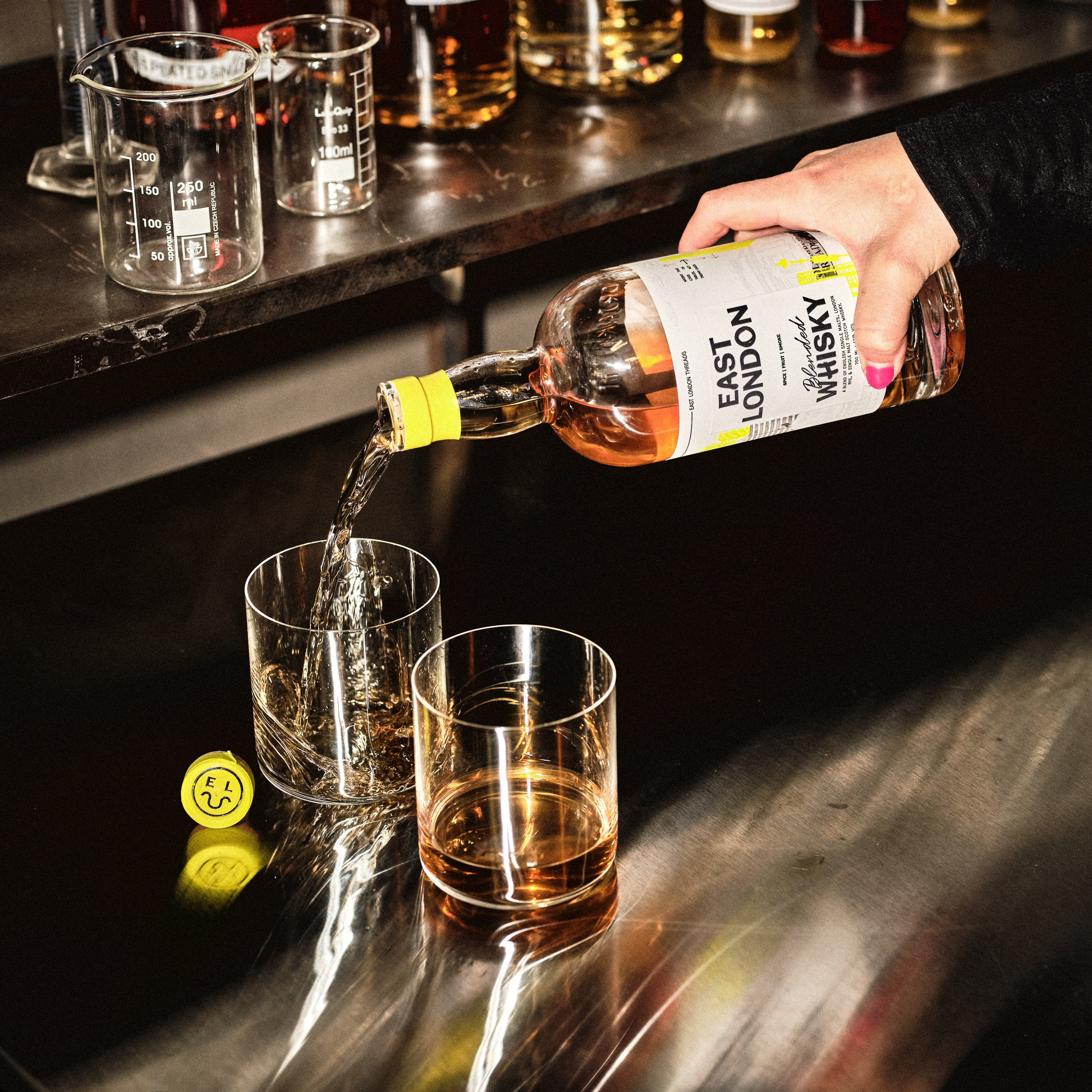For those looking for a bit more:
Water: London’s water is high in minerals and very hard. That makes it less obvious for whisky making, but it gives us unique advantages. It balances the sharpness of roasted malts, helps rye ferment more cleanly, and takes the rough edge off peat smoke. Instead of stripping the water back, we adapted our techniques to work with it.
Grain: Our recipes use a mix of barley, rye, and roasted malts, chosen for taste rather than efficiency. Over time we’ve trialled many mash bills, not to chase consistency but to test what’s possible with English malts and other grains.
Yeast: Rather than sticking to standard distilling strains, we prefer brewing yeasts. They work slower, but create more interesting flavours. We change strains through the year, adjusting for season, grain type, and the character we want in the spirit. This makes our ferments less predictable, but more rewarding.
Distillation: All our whisky runs through copper pot stills. We distil slowly, and every cut is judged by hand. Nothing is set to formula—the aim is to capture the fullest range of flavours from each batch.
Aging: The casks we use are chosen to suit the spirit, not to cover it. Ex-bourbon and second-fill casks make up most of our stock, but we’ll explore other cask types when they can add something useful to the whisky.
Blending: Blending is where all the pieces come together. Sometimes it means combining casks from Bow; other times it’s mixing Bow spirit with Scotch. With so many different whiskies in our warehouse, there are endless possibilities. Rather than being daunting, this variety gives us freedom to create something distinct.











